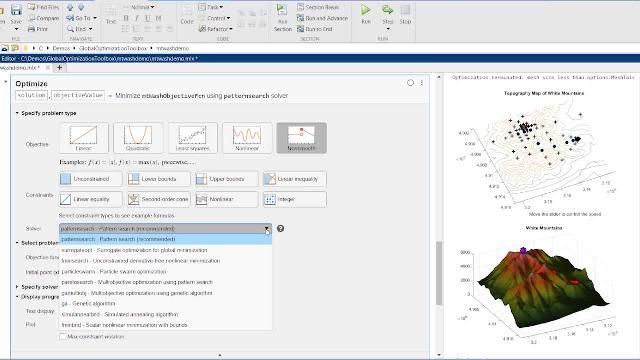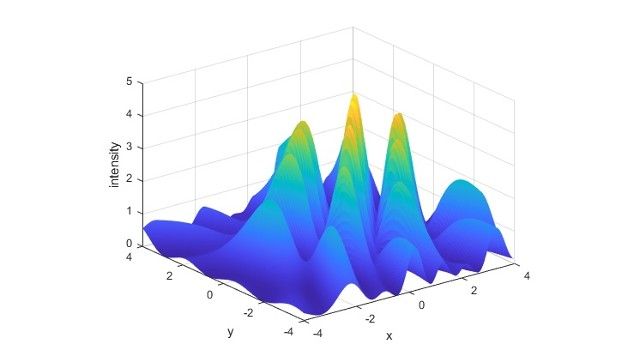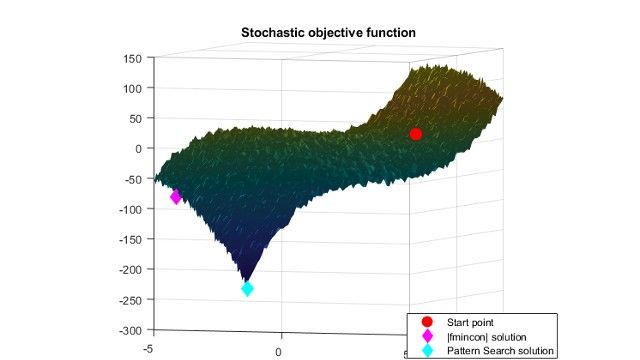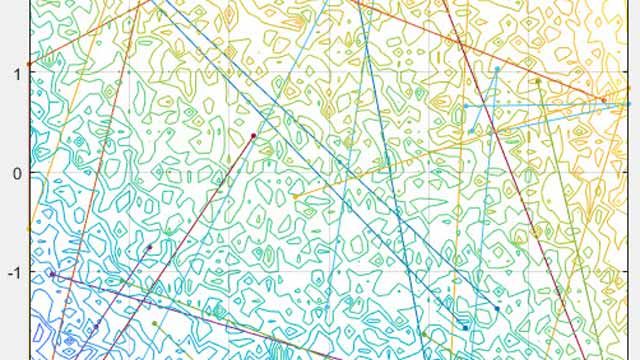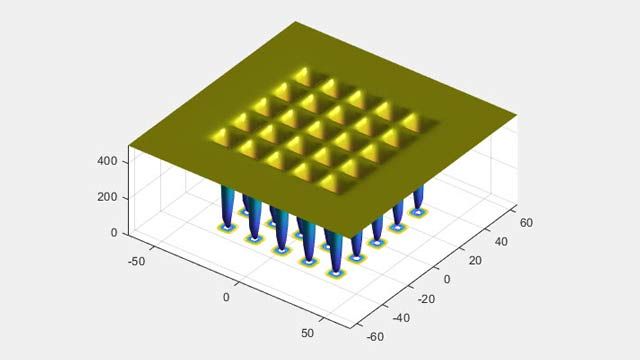Global Optimization Toolbox には、複数の最大値または最小値をもつ問題の大域解を探索する関数が用意されています。ツールボックスには、サロゲート、パターン探索、遺伝的アルゴリズム、粒子群、シミュレーテッド アニーリング、マルチスタート、および大域的探索ソルバーが含まれています。これらのソルバーを使用して、目的関数または制約関数が連続的、非連続的、確率的である場合、導関数を持たない場合、またはシミュレーションやブラックボックス関数を含む場合の最適化問題の解を求めることができます。複数の目的関数をもつ問題の場合は、遺伝的アルゴリズムまたはパターン探索ソルバーを使用してパレートフロントを特定できます。
ソルバーの有効性は、オプションの調整、および適用可能なソルバーの場合は作成、更新、探索関数のカスタマイズにより改善できます。カスタムのデータ型を遺伝的アルゴリズムおよびシミュレーテッド アニーリング ソルバーとともに使用して、標準データ型では容易に表すことができない問題を表現できます。ハイブリッド関数オプションを使用すると、最初のソルバーの後に 2 番目のソルバーを適用することにより解を改善できます。
GlobalSearch および MultiStart
勾配ベースのソルバーを適用し、大域的最小値の探索で複数の開始点から局所的最小値を見つけます。 制約なしおよび制約付きの平滑問題の解を求めます。
ドキュメンテーション | 例
パターン探索
現在の点から開始し、一連のベクトルを追加して新しい試行点を取得します。試行点の目的関数を評価し、その情報を使用して現在の点を更新します。現在の点が最適になるまで繰り返します。
ドキュメンテーション | 例
遺伝的アルゴリズム
生物進化の原理を模倣し、生物学的な生殖における遺伝子の組み合わせをモデルとしたルールを使用して、個々の点の母集団を繰り返し変更することにより、大域的最小値を探索します。
ドキュメンテーション | 例
粒子群
昆虫の群れの行動から着想を得たアルゴリズムを使用して、大域的最小値を探索します。各粒子は、それまでに見つけた最良の位置および群れが見つけた最良の位置によって影響を受けた速度と方向で移動します。
ドキュメンテーション | 例
シミュレーテッド アニーリング
物質を加熱した後に温度をゆっくりと下げて欠陥を減少させることでシステムのエネルギーを最小化する、アニーリング (焼きなまし) の物理プロセスを模倣した確率的探索アルゴリズムにより大域的最小値を探索します。
ドキュメンテーション | 例
多目的最適化
複数の目的関数および範囲、線形、または非線形制約をもつ問題に対し、非劣解の集合であるパレートフロントを特定します。パターン探索または遺伝的アルゴリズムソルバーのいずれかを使用します。
ドキュメンテーション | 例
製品リソース:
「Global Optimization Toolbox のパターン探索アルゴリズムを適用して、スループット、必要な生産設備、人的資源、および無駄などの要因を最適化しました。通常、考えられるすべてのモデルバリアントを評価するためには数千回の実験が必要になります。パターン探索アルゴリズムの使用により、その何分の 1 かの回数で同じ結果を得ることができました。」
Marius Gemeinhardt, Daimler AG
あなたは学生ですか?
ご所属の学校にはすでに Campus-Wide License が導入されていて、MATLAB、Simulink、その他のアドオン製品を利用できる可能性があります。
